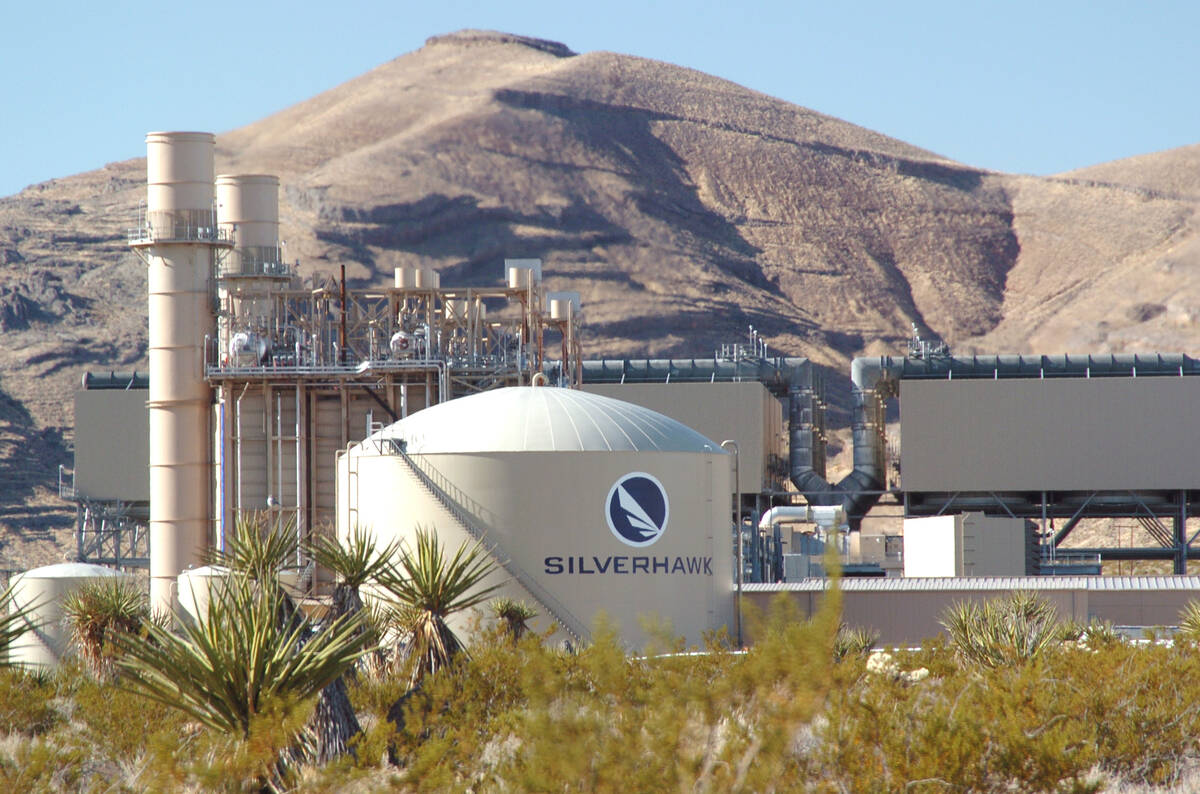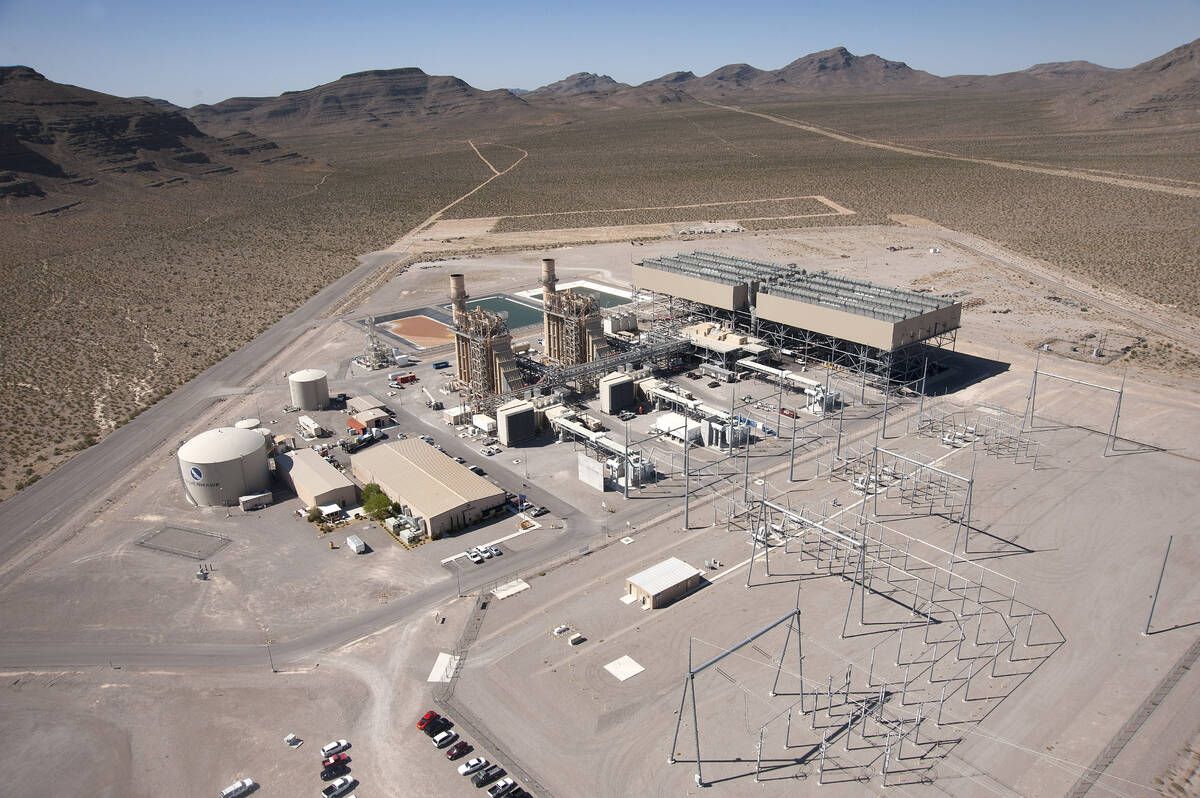NV Energy faces criticism for plan to build gas turbines near Las Vegas
NV Energy plans to build two natural gas turbines in Clark County for $353 million — a plan that’s already receiving pushback from some climate activists, who say ratepayers will be faced with higher bills.
The project was unanimously approved Tuesday by the Public Utilities Commission and marks the first phase of NV Energy’s massive $827 million plan, filed Nov. 30.
The turbines will help increase Nevada’s energy supply in June, July and August — the hottest months of the year — when customer demand and the price for energy peaks. It will be built at the existing Silverhawk Generating Station in Moapa, 30 miles north of Las Vegas, with a projected in-service date of July 2024.
The turbines would also only operate an estimated 700 hours per year, according to NV Energy spokeswoman Kaite Nannini.
She said the utility plans to recoup the costs of the project through higher customer rates when it files its 2026 general rate case.
The Nevada Conservation League is against the new turbines, noting that it will only be used occasionally despite costing more than $300 million.
“This plant is going to sit idle when it doesn’t need to be used, but Nevadans will still foot the bill for the new infrastructure,” Angelyn Tabalba, communications director of Nevada Conservation League, said.
The group also takes issue with the plant using natural gas, which has volatile prices.
NV Energy increased its quarterly rates for four consecutive quarters, and each time pointed to higher natural gas prices as the cause for the customer rate increases.
The additional turbines at Silverhawk is one of several projects under NV Energy’s proposed $827 million plan that would help the company meet the state’s climate goals and become less reliant on buying energy from the open market, which can be more expensive.
“In the long term, this will save our customers money,” NV Energy CEO Doug Cannon previously told the Review-Journal. “It will help reduce fuel costs. It will reduce purchase power costs, and it will also help us control costs associated with what have historically been market energy purchases.”
Speedy approval
The PUC approved the Silverhawk project because of the urgent need to increase Nevada’s energy supply and said a delay in approving the turbines “is an unacceptable risk to reliability at this time,” according to its order.
But the quick approval process, nearly four months after the utility filed its plans, has drawn some concerns.
Advanced Energy United, which advocates for the implementation of advanced energy services, said a few months isn’t enough time for NV Energy to consider all its options on meeting the summer peak energy demand.
“There wasn’t a ton of time for intervenors to get engaged to really interrogate the proposal, to propose alternatives for the commission and the utility to examine,” AEU Policy Director Sarah Steinberg said.
The Nevada Conservation League also expressed disappointment over the rushed nature of the process, saying that other energy options weren’t considered.
“It’s been known for a long time that there is an energy shortage during the peak summer times,” Tabalba said.
Clean energy advocates have criticized the approval because it won’t contribute to the state’s goal of having 100 percent carbon-free energy by 2050.
“This decision will hinder Nevada’s ability to transition to our stated goals of achieving 50 percent renewable energy by 2030, and it will put consumers on the hook, paying for costly new fossil fuel infrastructure that will accelerate the climate crisis,” said Estefany Carrasco Gonzalez, national director of Chispa, part of the League of Conservation Voters that advocates for healthier environments in Hispanic communities.
But NV Energy has said the natural gas turbines it plans to build can be converted in the future to produce energy from hydrogen, a carbon-free energy source, although there is no timeline for when the turbines would be converted to hydrogen energy.
Contact Sean Hemmersmeier at shemmersmeier@reviewjournal.com. Follow @seanhemmers34 on Twitter.
























